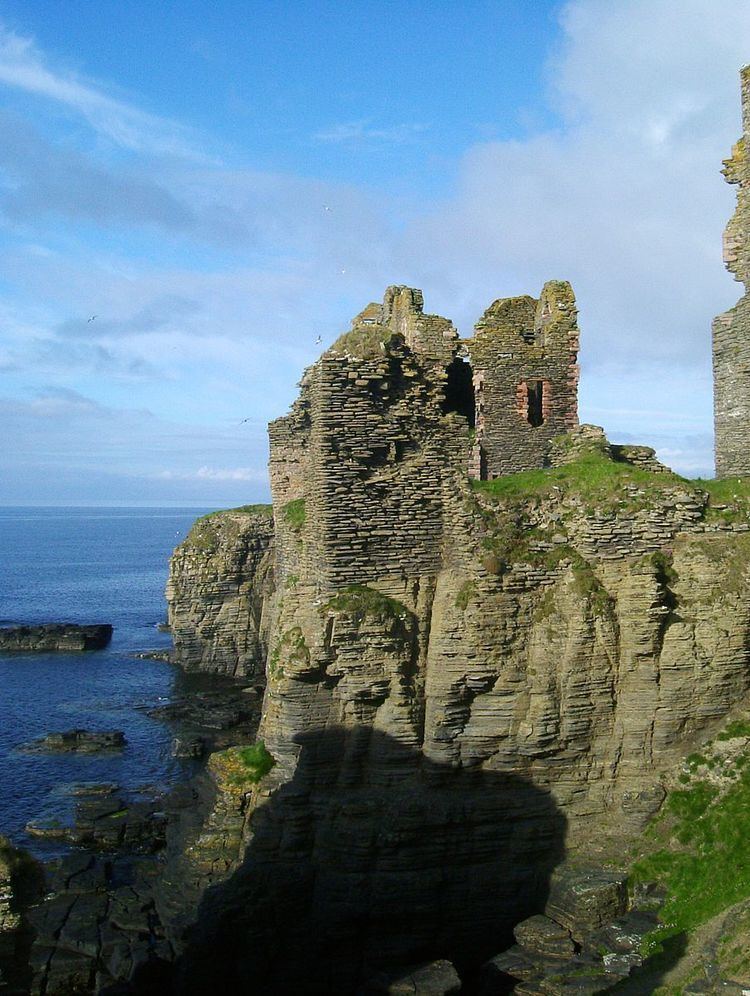Open tothe public Yes Address Wick KW1 4QT, UK | Condition Ruin | |
 | ||
Owner the Sinclair Castle Trust In use 15th century to 17th century Similar Noss Head Lighthouse, Ackergill Tower, Sinclairs Bay, Castle of Mey, Castle of Old Wick | ||
Castle sinclair girnigoe scotland aerial video yuneec typhoon h drone
Castle Sinclair Girnigoe is a castle located about 3 miles north of Wick on the east coast of Caithness, Scotland, United Kingdom. It is considered to be one of the earliest seats of Clan Sinclair.
Contents
- Castle sinclair girnigoe scotland aerial video yuneec typhoon h drone
- Castle sinclair girnigoe
- History
- The Castle today
- References
Castle sinclair girnigoe
History
In its earliest incarnation, Castle Sinclair Girnigoe was known only as Castle Girnigoe. It was built by William Sinclair, the 2nd Earl of Caithness, probably sometime between 1476 and 1496, but before his death at the Battle of Flodden in 1513.
There is some evidence to suggest that the castle was built on the foundations of an earlier fortalice.
In 1577, George Sinclair, the 4th Earl of Caithness imprisoned his own son John, Master of Caithness in Castle Sinclair Girnigoe, on suspicion of rebelling against his rule. He was held there for seven years, after which his father fed him a diet of salted beef, with nothing to drink, so that he eventually died insane from thirst.
Expansion occurred in 1606 when a gatehouse and other buildings were established along with a curtain wall. These were connected to the main castle by a drawbridge over a ravine. The same year George Sinclair, the 5th Earl of Caithness, requested the Scottish Parliament to change the name to Castle Sinclair, but because the names Castle Sinclair and Castle Girinigoe were both written down in 1700, both names have been in use since.
Robert Sinclair describes Girinigoe as “an adapted 5 storey L-plan crow-stepped gabled tower house, which sat upon a rocky promontory jutting out into Sinclair Bay. Of interest is the secret chamber in the vaulted ceiling of the kitchen.
In 1672, George, the 6th Sinclair earl of Caithness was in heavy debt to his fourth cousin, John Campbell of Glenorchy, and transferred the castle to Campbell as payment. When Sinclair died four years later with no heir, Campbell claimed the title Earl of Caithness and married Sinclair’s widow. However, Sinclair’s first cousin, George Sinclair of Keiss, challenged Campbell’s title, and hostilities broke out in January 1680 when Sinclair of Keiss with supporters from Wick made an attack on Girinigoe, destroying the roofs, walls, and floors. In July, Campbell slept on the castle grounds the night before his counter-assault known as the Battle of Altimarlach, in which he prevailed. The dispute was finally settled in 1681 when the Privy Council gave George Sinclair the title of Earl of Caithness but allowed Campbell to remain owner of the land. The castle, so damaged by the siege of 1680, was never inhabited again.
The Castle today
Recently, the Clan Sinclair Trust has begun restoration work on the Castle, in an attempt to preserve the archeological and historical importance of the structure. Once restored, it will be one of the few castles open to the public which are accessible to handicapped people.
